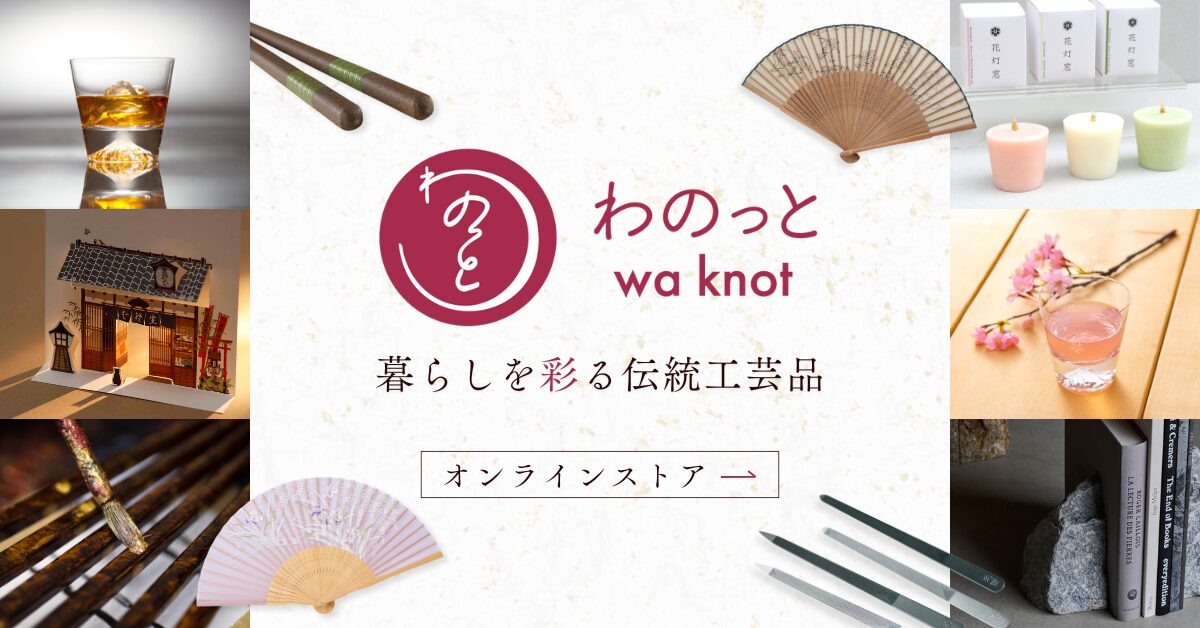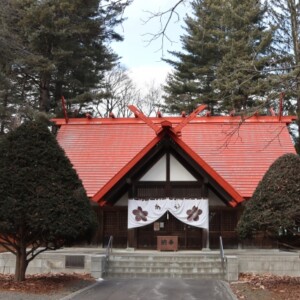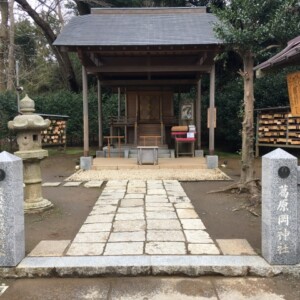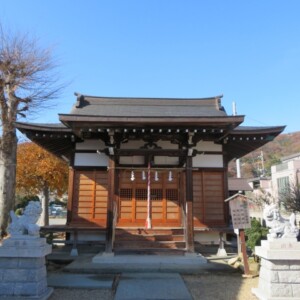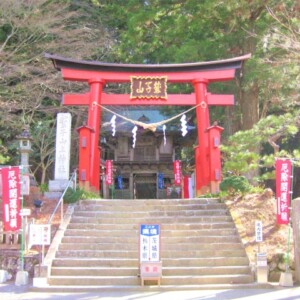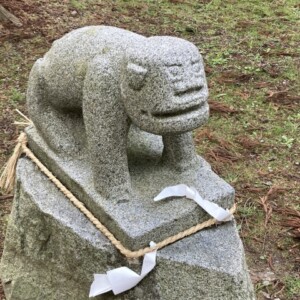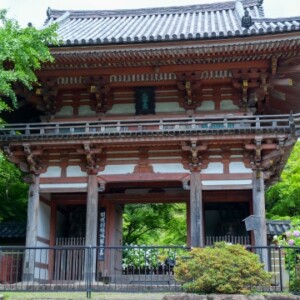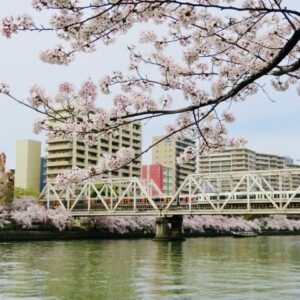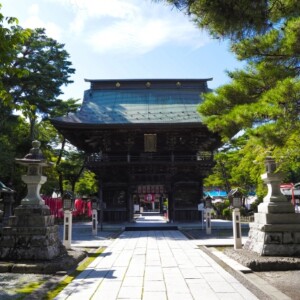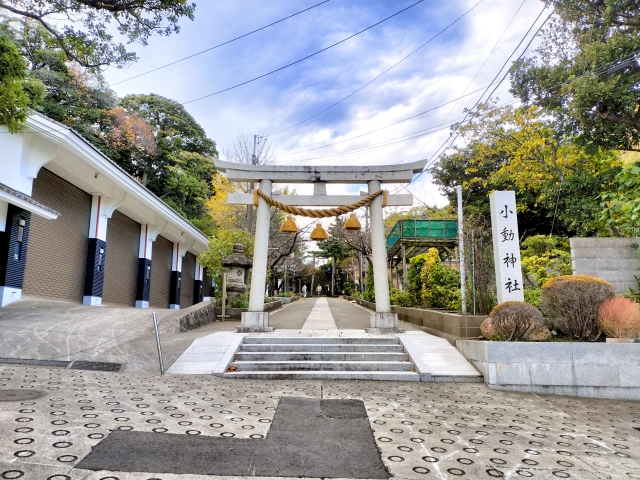
Koyurugi-jinja Shrine|Complete guide to the history, highlights, and worship information of this historic shrine
Koyurugi Shrine, located on Koyurugi Cape in Koshigoe, Kamakura City, Kanagawa Prefecture, is a historic shrine founded by Moritsuna Sasaki, a military commander in the Genpei War. It is known as the old shrine where Nitta Yoshisada prayed for victory during his invasion of Kamakura. The observatory at the back of the shrine grounds offers a magnificent view of Enoshima Island and Sagami Bay. The shrine is believed to be blessed with blessings to ward off bad luck and pray for victory, and is well known as the local town deity of Koshigoe.
Outline and basic information about Koyurugi-jinja Shrine
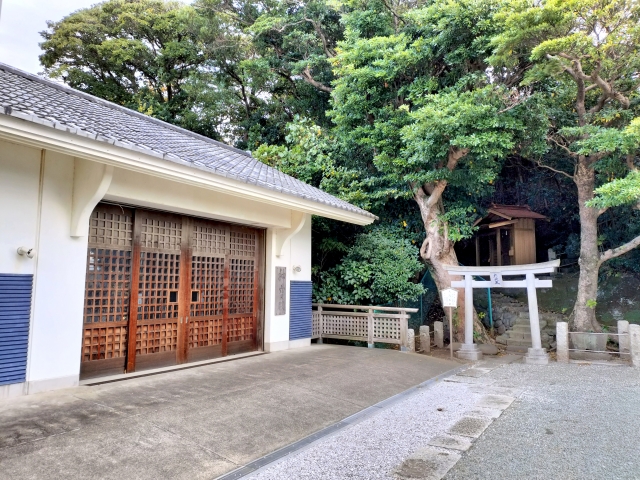
Koyurugi Shrine is located in Koshigoe, Kamakura City, and is built on a hill on Cape Koyurugi. The shrine is named after the Koyurugi pine tree, a mysterious pine tree that swayed even in the absence of wind. Formerly a village shrine, it has been cherished by the local people as the town guardian of the Koshigoe area.
History and OriginThe Koyurugi Shrine dates back to the Bunji period (1185-1189) and was built by Moritsuna Sasaki, a military commander in the service of Minamoto no Yoritomo. Moritsuna returned triumphantly to Kamakura after defeating Hiraimori in the Battle of Genpei. Moritsuna, who was looking for a place to invite Hachioji Shrine in Omi, his ancestral homeland, to repay the gods for their kindness, climbed Koyurugiyama on his way to Enoshima Benzaiten and was so pleased with its scenery that he decided to use it as the site for the shrine.
The origin of the name “Koyurugi” is a legend that there was a sacred tree whose branches and leaves moved in the windless air, making a strange sound like a se (a Japanese harp). This mysterious pine tree was called “Koyurugi no Matsu” and became the origin of the place’s name.
Later, in May of 1333, Nitta Yoshisada prayed for victory in his attack on Kamakura, and after his victory, he donated a sword and gold to rebuild the shrine. For this reason, Nitta Yoshisada is called the founder of the Oddo Shrine. In the Edo period (1603-1867), Tadamasa Okubo, lord of the Odawara domain, dedicated a flat plaque to the shrine, which was called Sanjinja or Hachioji Shrine.
With the separation of Shintoism and Buddhism in 1868, the shrine was renamed Koyurugi Shrine after the name of the place, and was upgraded to a village shrine.
The main deities of Koyurugi Shrine are Susano no Mikoto, Takemikata, Nihon no Musunon, and Toshitokujin. Susano no Mikoto is the younger brother of Amaterasu and Tsukiyominomikoto, and is also known for the myth in which he defeated the Yamata-no-orochi and obtained the Kusanagi no Ken sword.
Koyurugi-jinja Shrine has a wide range of benefits and has long been known for its prayers for good health and protection from bad luck. It is also believed to bring good fortune, victory, prosperity, and success in business. In particular, it is believed to be beneficial for victory and overcoming difficulties due to the history that Nitta Yoshisada prayed for victory during his attack on Kamakura and won the war.
In 1909, when the Suwa Shrine in Koshigoe Village was moved to Koyurugi Shrine, the deity Takemikata was enshrined there. Kenmonakata-gami is a warrior god known as the main deity of Suwa-taisha Shrine, and is worshipped as a god of valor and victory.
Highlights and Features of Koyurugi Shrine
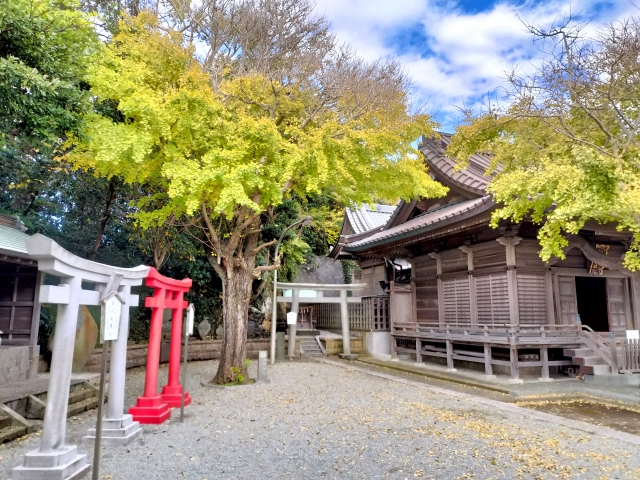
Koyurugi Shrine is located on a hill overlooking the sea at Koyurugi Cape. In addition to the main shrine and worship hall, there are several shrines scattered throughout the shrine grounds, offering a wealth of attractions. The shrine is also designated as a Japanese Heritage Site because of its high historical value in Kamakura.
Architectural and Structural Attractions
The shrine pavilions of Koyurugi-jinja Shrine were restored and newly built after the Great Kanto Earthquake, and the beauty of traditional shrine architecture is preserved today. Since the main shrine building was damaged during the Great Kanto Earthquake, the main shrine building was restored and the worship hall was newly built.
The Kaijinsha, Inarisha, Konpiragu Shrine, and Dorokutensha shrines were built on the grounds of the shrine, each dedicated to a different deity. Konpira Shrine, also known as “Ryuoh, the Sea God,” is the deity in charge of navigational safety and rescue at sea, while Inari Shrine is popularly known as the deity of prosperity, industrial prosperity, family safety, traffic safety, and the advancement of the performing arts.
Especially impressive is the bright red guardian dog standing in front of the shrine, whose adorable appearance soothes the hearts of worshippers.
Nature and scenic beauty
The greatest attraction of Koyurugi-jinja Shrine is the spectacular view from the observatory at the back of the shrine grounds, which offers an excellent location from which to view Enoshima Island, Sagami Bay, and even Mount Fuji if the weather is favorable. The gradation of the sea and sky at sunset quietly soothes the hearts of visitors.
The natural beauty that can be enjoyed depending on the season is also a feature. Hydrangeas are planted in front of the portable shrine, and visitors can enjoy a particularly beautiful sight when the flowers are in full bloom.
Another highlight is that the position of the setting sun changes with the seasons, so you can enjoy a different spectacular view no matter how many times you visit. Despite its location along Route 134, the temple grounds are surrounded by silence, maintaining a sacred space that one would not expect to find in an urban area.
Features of the Shrines and Shrines on the Temple Grounds
Koyurugi-jinja Shrine has many shrines within its grounds and is known as a shrine where many festivals are held throughout the year. The main shrines on the grounds are as follows
Watatsumi-jinja Shrine is the god of fishery and navigation, and its annual festival is held on January 16. Since Koshigoe is a fishing port town, it is worshipped by local fishermen.
Konpira Shrine is held on January 9 and is revered as a guardian deity of maritime safety. The Inari Shrine is held on February 27 and attracts many worshippers who wish for prosperous business.
While these shrines are in harmony with the main shrine, each has its own unique characteristics, illustrating the diversity of beliefs at Koyurugi-jinja Shrine as a whole.
Guide to Worship
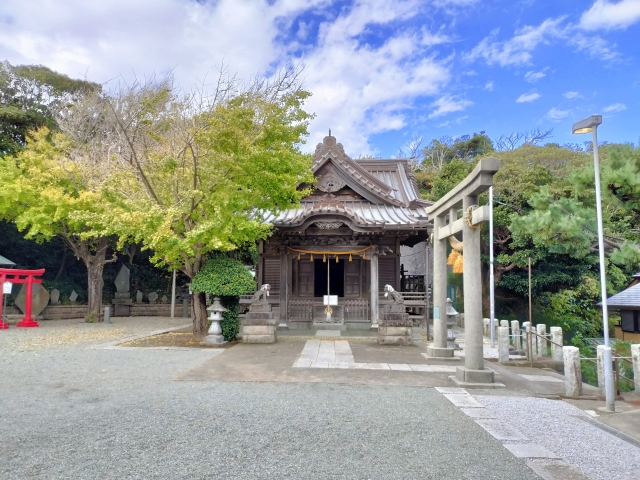
At Koyurugi-jinja Shrine, you can worship according to traditional shrine etiquette. With a spectacular view overlooking the ocean, you are invited to visit the shrine in peace and quiet to pray for protection from bad luck and victory. There are several shrines within the grounds of the shrine, so we recommend that you take your time to visit them.
Worship Etiquette and Manners
The first step in visiting Koyurugi-jinja Shrine is to pass through the torii gate located along Route 134. When passing through the torii gate, bow lightly and avoid the center of the path.
After purifying oneself at the water purification booth, visitors will enter the main shrine to pay their respects. Please pray for good health, victory, and protection from bad luck. Since the main deity of Koyurugi Shrine is Susano-no-mikoto, it is especially suitable for worshippers who wish to overcome difficult situations or start a new challenge.
Don’t forget to visit the precinct shrines as well. You can pray for safe voyaging and fishing at Kaijinsha Shrine, maritime safety at Konpira-gu Shrine, and prosperous business at Inari Shrine. By carefully visiting each of the shrines within the precincts of the shrine, you will receive multifaceted blessings.
After visiting the shrine, we recommend that you go to the observatory at the back of the shrine grounds to enjoy the magnificent view of Enoshima Island and Sagami Bay, and spend some quiet time there.
Annual Events/Tenno MatsuriThe most important annual event at Koyurugi Shrine is the Tenno Matsuri held every July; in 2025, it will be held over three days on July 6, 12, and 13.
The Tenno Matsuri is a joint festival between Koyurugi Shrine and Yasaka Shrine on Enoshima, and on the final day, the palanquin from Yasaka Shrine is brought to our shrine. This festival is also called “Gyogai Matsuri,” meaning that the deity of Yasaka Shrine returns to Koyurugi Shrine once a year.
The highlight of the festival is the parade of the mikoshi over the sea, followed by the parade of the mikoshi and the mikoshi of Koyurugi Shrine on the other side of the river, where the two mikoshi tussle with each other in a heroic display. The merging of the mikoshi from Yasaka Shrine and the mikoshi from Koyurugi Shrine at the intersection in front of Ryukuchi-ji Temple is a highlight of the festival, and the two mikoshi then proceed side by side to Koyurugi Shrine.
The Enoden train runs on a combined track, where visitors can see the Enoden running among the many people carrying the portable shrines, a rare and lively scene in this day and age. From near Koshigoe Station on the Enoden to the approach to Koyurugi-jinja Shrine, stalls selling sweets, goldfish scooping, and other items line the street.
In 2025, the year of the Snake, the year of the 6th annual Grand Festival, the procession will be longer than usual, with all the musicians joining the procession, and the opening of the sacred object will be held after the Kango-Sai.
Red Seal and Good Luck Charm Information
Koyurugi Shrine offers red seals, but since it is a concurrent shrine of Yakumo Shrine and the shrine guardian is not always available, it is recommended that visitors who wish to receive them check the hours in advance. If the awarding office is unmanned, you can also receive the seals at Yakumo Shrine, which is within walking distance.
At the awarding office on the shrine grounds, red seals can be obtained from the shrine guard. The red seal is marked with the seal of Koyurugi-jinja Shrine and ink writing, and is treasured as a memorial of your visit to the shrine.
Various types of good luck charms are available according to their benefits, such as protection against bad luck, prayers for victory, and prayers for good health. Omikuji (fortune) and ema (votive picture tablet) are also available for visitors to pray according to their wishes.
The shrine is especially popular as a good-luck charm for overcoming difficult situations or starting a new challenge, since the main deity is Susano-no-mikoto. Because of its location facing the sea, the shrine also awards good luck charms for safe voyages and travel.
Access and Visiting Information
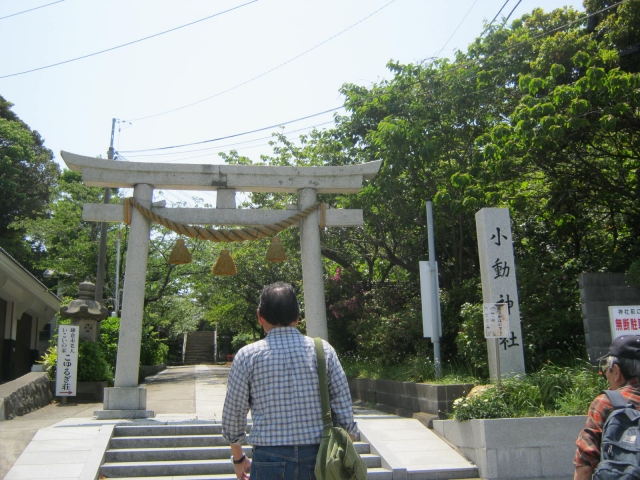
Koyurugi-jinja Shrine is within walking distance of Koshigoe Station on the Enoden Line, making access by train convenient. Located along Route 134, it is also accessible by car, but public transportation is recommended since the roads are often congested during the summer months.
Traffic Access
The closest station to Koyurugi-jinja Shrine is Koshigoe Station on the Enoshima Electric Railway (Enoden). It is a 4 to 6 minute walk from Koshigoe Station on the Enoden Line and can be reached from the station through the Koshigoe shopping district.
Koshigoe Station is one of the main Enoden stations and is approximately 15 minutes from Fujisawa Station and 20 minutes from Kamakura Station. It is also within walking distance from Kamakura Koukoumae Station on the Enoden, and it is possible to walk along the seaside from the Shichirigahama direction.
If you have enough time, it is also a pleasant route to get off at Inamuragasaki, stroll through Inamuragasaki Seaside Park where there is a walking legend of Nitta Yoshisada, and walk along the beach or the seaside sidewalk. This route allows you to enjoy the history of Kamakura and the view of the sea at the same time.
When accessing by car, use Route 134. Head east from the direction of Enoshima and southwest from downtown Kamakura, and you will see the information sign for Koyurugi-jinja Shrine near the Koshigoe city border.
<Address> 2-9-12 Koshigoe, Kamakura City, Kanagawa Prefecture, 248-0033 Japan
Hours of Operation, Fees, and Parking
Koyurugi-jinja Shrine is open to visitors on a voluntary basis, and there is no set admission fee. Access to the shrine grounds is generally available 24 hours a day, but it is recommended to check in advance the reception hours of the shrine office and the granting of red seals.
There is no large parking lot dedicated to the shrine, but there are several coin-operated parking lots nearby. However, especially during the summer and festival periods, the surrounding roads are often congested and the parking lots are often full, so public transportation is recommended whenever possible.
If you go directly to Koyurugi-jinja Shrine, there are five or six temples clustered around Koshigoe Station, so you can use the Enoden as well as the Odakyu on your way home if you visit them and end your visit at Ryuko-ji Temple, the head temple of Nichiren Shu’s spiritual heritage. By visiting temples and shrines in the vicinity, you will have a more fulfilling visit to the temple.
The observatory on the temple grounds is open to visitors, allowing them to enjoy a spectacular view of Enoshima Island and Sagami Bay free of charge. The view at sunset is especially beautiful, and many visitors enjoy taking pictures.
Reference sites
Kamakura City Tourism Association, Koyurugi Shrine: https://www.trip-kamakura.com/place/japanheritage/176.html
Kanagawa Prefectural Shinto Shrines Agency, Koyurugi Shrine: https://www.kanagawa-jinja.or.jp/shrine/1205010-000/


